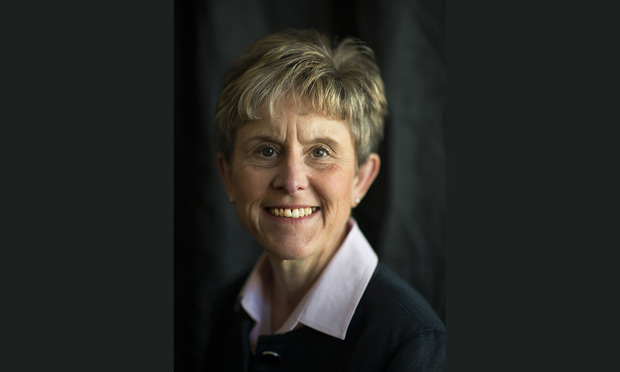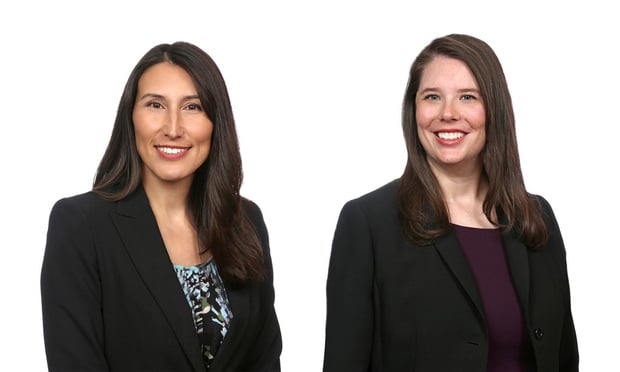On Appeals: (Don't) Take a Walk on the Wild Side
If I throw a birthday party at my house, and I suggest guests park a couple blocks away where there's always lots of space, and, as my guest, you do that but get hit by a car when walking over, can you sue me for your injuries because my suggestion of where to park created a foreseeable risk of harm?
February 14, 2018 at 03:58 PM
6 minute read

If I throw a birthday party at my house, and I suggest guests park a couple blocks away where there's always lots of space, and, as my guest, you do that but get hit by a car when walking over, can you sue me for your injuries because my suggestion of where to park created a foreseeable risk of harm?
The California Supreme Court considered a question similar to that recently in Vasilenko v. Grace Family Church. There, a unanimous court drew a sharp line in duty of care cases involving premises liability.
The Grace Family Church is located on Marconi Avenue, a five-lane street in Sacramento County. Across the street from the church is the Debbie Meyer Swim School. The church had permission to use the swim school's parking lot as an overflow parking area.
Aleksandr Vasilenko drove to the church one evening to attend a seminar. When he arrived, he was told by a volunteer parking attendant that the main church lot was full, and he could park at the swim school lot across the street. After parking his car, Vasilenko attempted to cross the street in the middle of the block directly across from the church, where there was no crosswalk. He was hit and injured by an oncoming car.
Vasilenko sued the church for negligence, alleging it had created a foreseeable risk of harm by maintaining an overflow parking lot in a location that required church visitors to cross a five-lane avenue.
The church moved for summary judgment, claiming that it did not have a duty to assist church visitors in crossing a public street it did not own, possess, or control. The trial court agreed, but the Court of Appeal reversed. The California Supreme Court granted review and held “that a landowner does not have a duty to assist invitees in crossing a public street when the landowner does no more than site and maintain a parking lot that requires invitees to cross the street to access the landowner's premises, so long as the street's dangers are not obscured or magnified by some condition of the landowner's premises or by some action taken by the landowner.”
All of this seems somewhat straightforward and reasonable. What is important about this decision, however, is the court's careful analysis of how it drew the line on duty of care.
First, the court addressed the church's argument that it did not owe Vasilenko a duty because it did not control the portion of Marconi Avenue where he was injured. Landowners, of course, may be liable for injuries occurring on their premises.
The court explained that it is one thing for an establishment to have an entrance on a public street, but another thing for an establishment to arrange parking across a public street, requiring an invitee to cross the street to reach the establishment. As the court acknowledged, in the latter case, the establishment, here the church, has marginally increased the invitee's risk of harm in using the street.
Second, the court found that unless the church had impaired the driver's ability to see and react to a pedestrian crossing the street, or similarly had impaired the church member's ability to react to a passing motorist, the church's conduct would be too attenuated to the injury suffered for liability to attach.
Third, the court concluded there is little the church can do to prevent injuries on a public road. The church has no power to install a crosswalk, traffic device, or additional lighting, because those responsibilities are left solely to the government. California law prohibits civilians from directing traffic or otherwise controlling public streets.
Thus, the court reversed the Court of Appeal and found the church is not subject to liability under California law for Vasilenko's injuries from crossing the street.
That ruling makes sense for a number of reasons. As the court itself recognized, shouldn't the blame here really fall on the pedestrians and drivers, who can take measures to safely cross a street or drive with caution? Parking in public to get to a church isn't like a phone booth or a bus stop, where people are intended to congregate, and which can and should be placed in safe, visible locations.
Also, where would the duty end? If a church is liable for foolish visitors who dart across busy streets without paying attention, what else is it liable for outside its doors? If it holds services during a rainstorm, and a congregant gets in a car accident on the way over, is the church liable for the accident because it should have foreseen the rainstorm could increase the risks of an accident? Or what if the church preaches its congregants should bring blankets to the poor in winter, and a congregant slips on some ice while carrying an armload of blankets to the homeless—is that foreseeable harm subjecting the church to liability? So, although the court's decision may seem like common sense, remember that the Court of Appeal looked at the same facts and cases and reached the opposite conclusion.
But what's next? What if the injury had been more foreseeable? For example, if the church hosts Sunday school, does it have a duty to help small children cross the street? Or should this fall to their parents? What if the church knew the swim school did not safely maintain the parking lot? Would it then have a duty to repair a dangerous condition before it sent church visitors across the street to park? Where will the next line be drawn for injuries that occur off premises? Based on the analysis in this case, the factors to consider would be whether the injured invitee is equally to blame, and whether it was realistic and financially plausible for the landowner to have done anything to prevent the injuries.
On Appeals is a monthly column by the attorneys of the California Appellate Law Group LLP, the largest appellate specialty boutique in Northern California. Maureen Dear is of counsel with the firm and spent eight years as a research attorney in the California Courts of Appeal, analyzing hundreds of appeals for a variety of justices. Find out more about Maureen and the California Appellate Law Group LLP at www.calapplaw.com.
This content has been archived. It is available through our partners, LexisNexis® and Bloomberg Law.
To view this content, please continue to their sites.
Not a Lexis Subscriber?
Subscribe Now
Not a Bloomberg Law Subscriber?
Subscribe Now
NOT FOR REPRINT
© 2025 ALM Global, LLC, All Rights Reserved. Request academic re-use from www.copyright.com. All other uses, submit a request to [email protected]. For more information visit Asset & Logo Licensing.
You Might Like
View All



Trending Stories
Who Got The Work
J. Brugh Lower of Gibbons has entered an appearance for industrial equipment supplier Devco Corporation in a pending trademark infringement lawsuit. The suit, accusing the defendant of selling knock-off Graco products, was filed Dec. 18 in New Jersey District Court by Rivkin Radler on behalf of Graco Inc. and Graco Minnesota. The case, assigned to U.S. District Judge Zahid N. Quraishi, is 3:24-cv-11294, Graco Inc. et al v. Devco Corporation.
Who Got The Work
Rebecca Maller-Stein and Kent A. Yalowitz of Arnold & Porter Kaye Scholer have entered their appearances for Hanaco Venture Capital and its executives, Lior Prosor and David Frankel, in a pending securities lawsuit. The action, filed on Dec. 24 in New York Southern District Court by Zell, Aron & Co. on behalf of Goldeneye Advisors, accuses the defendants of negligently and fraudulently managing the plaintiff's $1 million investment. The case, assigned to U.S. District Judge Vernon S. Broderick, is 1:24-cv-09918, Goldeneye Advisors, LLC v. Hanaco Venture Capital, Ltd. et al.
Who Got The Work
Attorneys from A&O Shearman has stepped in as defense counsel for Toronto-Dominion Bank and other defendants in a pending securities class action. The suit, filed Dec. 11 in New York Southern District Court by Bleichmar Fonti & Auld, accuses the defendants of concealing the bank's 'pervasive' deficiencies in regards to its compliance with the Bank Secrecy Act and the quality of its anti-money laundering controls. The case, assigned to U.S. District Judge Arun Subramanian, is 1:24-cv-09445, Gonzalez v. The Toronto-Dominion Bank et al.
Who Got The Work
Crown Castle International, a Pennsylvania company providing shared communications infrastructure, has turned to Luke D. Wolf of Gordon Rees Scully Mansukhani to fend off a pending breach-of-contract lawsuit. The court action, filed Nov. 25 in Michigan Eastern District Court by Hooper Hathaway PC on behalf of The Town Residences LLC, accuses Crown Castle of failing to transfer approximately $30,000 in utility payments from T-Mobile in breach of a roof-top lease and assignment agreement. The case, assigned to U.S. District Judge Susan K. Declercq, is 2:24-cv-13131, The Town Residences LLC v. T-Mobile US, Inc. et al.
Who Got The Work
Wilfred P. Coronato and Daniel M. Schwartz of McCarter & English have stepped in as defense counsel to Electrolux Home Products Inc. in a pending product liability lawsuit. The court action, filed Nov. 26 in New York Eastern District Court by Poulos Lopiccolo PC and Nagel Rice LLP on behalf of David Stern, alleges that the defendant's refrigerators’ drawers and shelving repeatedly break and fall apart within months after purchase. The case, assigned to U.S. District Judge Joan M. Azrack, is 2:24-cv-08204, Stern v. Electrolux Home Products, Inc.
Featured Firms
Law Offices of Gary Martin Hays & Associates, P.C.
(470) 294-1674
Law Offices of Mark E. Salomone
(857) 444-6468
Smith & Hassler
(713) 739-1250






